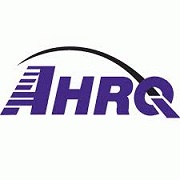 Memorial Hospital, a 97-bed community hospital in Marysville, Ohio, uses strategies from AHRQ’s Re-Engineered Discharge (RED) toolkit to help newly discharged patients follow their treatment plans and improve their health in order to avoid readmission to the hospital.
Memorial Hospital, a 97-bed community hospital in Marysville, Ohio, uses strategies from AHRQ’s Re-Engineered Discharge (RED) toolkit to help newly discharged patients follow their treatment plans and improve their health in order to avoid readmission to the hospital.
“RED was adopted in 2012 as a way to further reduce the hospital’s relatively low readmission rates for patients with congestive heart failure, adult pneumonia, and chronic obstructive pulmonary disease (COPD),” said D. Beth Johnson, R.N., B.S.N., Memorial Hospital’s director of quality.
The RED toolkit, developed by AHRQ-funded patient safety researchers in Boston, provides evidence-based tools to help hospitals re-engineer discharge processes. By designating discharge advocates who help patients understand their medications and schedule follow-up appointments with their primary care physicians, hospitals can reduce readmissions.
Memorial Hospital adopted the RED strategy of making a follow-up phone call to each patient within 72 hours of discharge. Staff nurses call patients asking if they have pain, have filled their prescriptions, scheduled follow-up appointments, or have questions about their medical instructions.
With this practice, the hospital’s readmission rate declined to single-digit percentages. After 10 months of making follow-up phone calls, the readmission rate for congestive heart failure patients averaged 9.1 percent, compared with 15.4 percent for the previous 9-month period. During the same time frame, COPD readmissions declined from 20.6 to 11.8 percent, while the readmission rate for pneumonia patients fell from 10 to 9.7 percent.
“RED offers quality utility, and by using this resource, we could continue improving our discharge planning,” Ms. Johnson noted.
“We have an 80 percent success rate in reaching discharged patients. Our nurses found that most questions patients have during the follow-up call revolve around clarification of discharge instructions,” said Ms. Johnson. “Our pharmacists and hospitalists are immediately available to assist during the calls.”
Memorial Hospital also uses the “Hospital Consumer Assessment of Healthcare Providers and Systems” (HCAHPS®) survey to measure the perceptions of recently discharged patients about nurse communication, responsiveness of staff, cleanliness, and pain control. HCAHPS was developed through a partnership with AHRQ and the Centers for Medicare & Medicaid Services.
Besides reducing readmissions, RED has helped improve patient satisfaction scores. “Since implementing the post-discharge phone calls, our hospital’s HCAHPS patient satisfaction scores have increased from 84.4 to 87.7 percent,” Ms. Johnson noted. “We’re also making follow-up calls to patients who are discharged from our intensive care step-down unit.”
Memorial Hospital also found AHRQ’s brochure, Blood Thinner Pills: Your Guide to Using Them Safely, helpful in educating patients at its anticoagulation clinic. At the clinic, patients learn how to use blood-thinning medications safely for long-term conditions such as congestive heart failure and diabetes.
“The [AHRQ] brochure on blood thinners is a useful tool to provide one-on-one teaching with patients to reinforce the principles of proper medication self-management. We want to positively affect patients’ outcomes over the long term,” said Britt A. Cummins, M.S., the hospital’s director of pharmacy.
Patients who participate in anticoagulation clinics tend to experience fewer adverse events, as well as having fewer hospital visits resulting from those complications.
Impact Case Study Identifier: 2015-07
AHRQ Product(s): HCAHPS, Re-Engineered Discharge (RED), Staying Active and Healthy With Blood Thinners
Topic(s): Chronic Care: Management, Consumer Assessment of Healthcare Providers and Systems (CAHPS), Hospital Readmissions, Patient Safety, Quality
Geographic Location: Ohio
This article was originally published on AHRQ and is republished here with permission.
